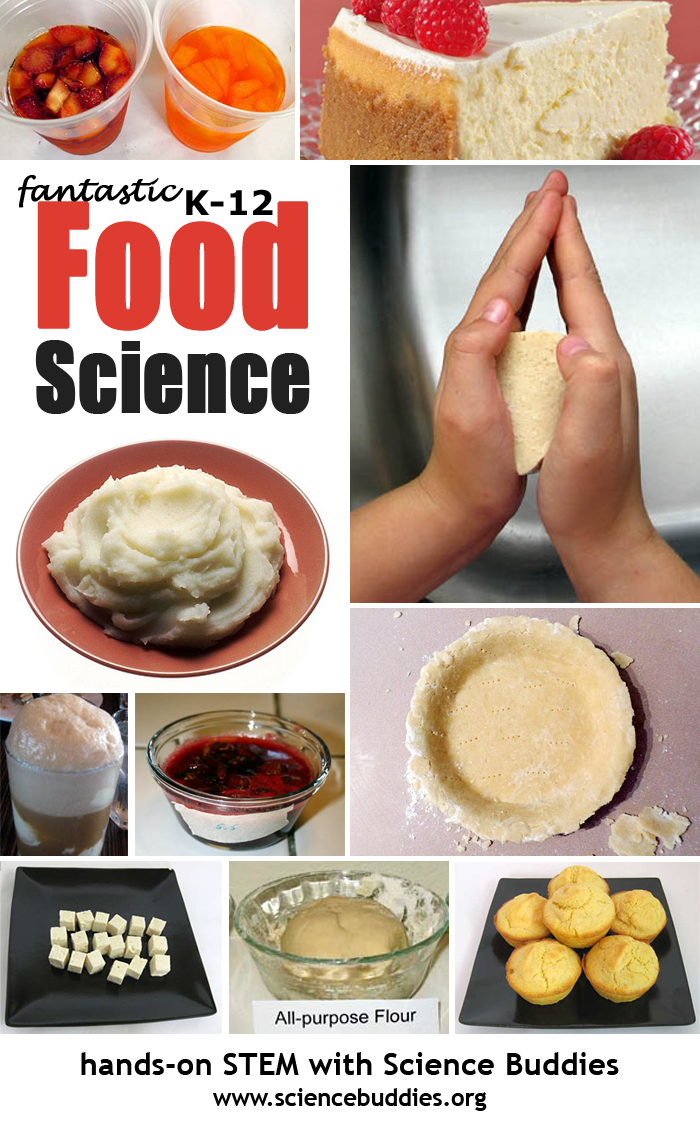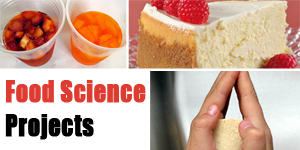Fourteen Food Science Projects
Kids experiment with food science projects to investigate the science behind the process of making certain foods and recipes. From cheesecake and dough to marinades and gelatin-based desserts, there are plenty of taste-test opportunities for K-12 food science exploration at home!

14 K-12 Food Science Projects and Activities
For kids interested in chemistry or in cooking and food science, kitchen science projects are a great way to experiment with exciting science at home. That you can eat (most) of the results of your experiments adds to the fun of doing food science!
The following Science Buddies projects and activities can be done in the kitchen and encourage students to explore the process for making different foods. How do different preparation techniques change the resulting food and why? Mix up a batch of something from the list below to find out!
- Choice Cheesecakes: Which Baking Method is the Best?: experiment to see how the crust and rise of a cheesecake differs based on the baking method.
- Chemistry of Baking Ingredients 1: How Much Baking Powder Do Quick Breads Need?: experiment with the amount of baking powder in a muffin to investigate the role of the ingredient in your recipes.
- Can Baking Soda Substitute for Baking Powder in a Recipe?: experiment to see if you can substitute baking soda for baking powder in a food recipe.
- Flavor That Food! Exploring the Science of Marinades: get the most flavor from marinades by finding out what ingredients help make marinades stick to the surface of food.
- From Sauce to Solid: The Science of Cranberry Condiments: explore the difference between making a jiggly cranberry mold and cranberry sauce.
- Great Globs of Gluten! Which Wheat Flour Has The Most?: investigate to see how tenderness and toughness of baked goods varies based on the kind of flour used.
- How Can Tofu Pack Such a Flavorful Punch?: experiment to find out how tofu changes when it is frozen.
- Is the Soup Ready? Measure How Much Water is Absorbed by Dried Beans: rehydrate dried beans, common in soup recipes, to find out what happens when you add liquid to dried beans.
- Perfecting Pastries: The Role of Fats in Making a Delicious Pastry: try different fats and temperatures to see which variables are most important in making a pastry crust with the best texture and taste.
- The Pasta Puzzle: How Much Water is Required to Cook Pasta?: experiment to see if you can figure out the least amount of water necessary to prepare pasta.
- Smashing for Mash: The Science of Making Memorable Mashed Potatoes!: experiment to find the best way to make mashed potatoes with a good consistency.
- Stop Slumping: What Makes Foams Stand Up Straight: shake up some "foam" to find out what it takes to get foam that has high volume and lasts.
- Which Fruits Can Ruin Your Gelatin Dessert?: find out which fruits work well in gelatin desserts, which ones don't, and what enzymes have to do with the process.
- You Want Fries With That? The Science of Crispy Potatoes: experiment to find the best approach to making crispy oven-fried potatoes.
For other great food-related science project ideas and activities, see these related collections:
Pin this collection:

Categories:
You Might Also Enjoy These Related Posts:
- Teach Genetics and Heredity with Free STEM Lessons & Activities - Genetics Science Projects
- Star Wars Projects for May the 4th Be With You Science
- 25+ Earth Day Science Experiments and Activities
- Arduino Science Projects and Physical Computing
- Spring Science Projects: 26 Science Experiments for Spring
- 25+ Robotics Projects, Lessons, and Activities
- March Madness Basketball Science Projects: Sports Science Experiments
- 15 Density Science Experiments










